- Home
- Nick Hornby
Books, Movies, Rhythm, Blues: Twenty Years of Writing About Film, Music and Books Page 3
Books, Movies, Rhythm, Blues: Twenty Years of Writing About Film, Music and Books Read online
Page 3
But then, sometime later, I was listening to Wright singing ‘That’s How Strong My Love Is’ and I experienced a similar sensation. You might not recall Otis Redding’s better-known cover of the song as being particularly hilarious, but in Wright’s hands it became something of a comic tour de force. ‘If I were a fish that had been cast upon the land,’ he laments, ‘I would stay there if you would let me hold your hand.’
Now, even I had to admit that this couplet doesn’t work. The whole fish/hand thing is a real problem – the only mental picture one can paint is desperately surreal, not desperately romantic – and one would have thought that the best way to deal with the line was to get the hell out of it as quickly as possible. But Wright doesn’t see it that way. He compounds the problem by ad-libbing after the first ‘if’ clause (why does he always come unstuck on the conditionals?), so that his version goes like this: ‘If I were a fish – and this is a bad situation to be in – that had been cast upon the land …’ Pointing out the discomfort of being a fish out of water adds little to Wright’s rendition; in fact, this time there is no way around it. Snorting, derisive laughter is the only proper response.
Once I’d recognized the absurdity of this fish lyric, the scales began to fall from my eyes. James Brown’s ‘Good God’s started to get a little grating. Otis Redding’s insistence on slipping the word ‘good’ into Sam Cooke’s gentle, cute ‘Wonderful World’ – ‘Don’t know what a good slide rule is for’, ‘Don’t know much about the good French I took’ – only proved to me that testifying isn’t appropriate to every circumstance. Al Green’s ‘Let’s Get Married’ is a beautiful song that hits all the buttons the title demands – until, that is, the little passage right near the end, when the band gets into a groove and Green starts noodling around. ‘Let’s get married today,’ he pleads. ‘Might as well.’ Might as well? Is that really the best that the No. 1 Lurve Man of the seventies can do? I spent years labouring under the delusion that copying Al Green’s every move would be my passport to sexual Nirvana, but ‘Might as well’ isn’t going to get anyone very far, especially if you don’t much look or sound like Al Green in the first place.
What worried me most about O. V. Wright and his fish, though, was that it could set me on a terrible, dark, gloomy road leading all the way to classical music – which, famously, isn’t funny at all, ever. I’ve still got just about enough joke-free music to keep me going, but if anyone happens to find something funny in any songs by the blues singer Robert Johnson (‘Hellhound on My Trail’, or ‘Stones in My Passway’, which Greil Marcus described as ‘a two-minute image of doom’), please, could you keep it to yourself? I don’t want to hear about it.
‘You Send Me’
Sam Cooke may or may not have been the first soul singer, just as Iggy Pop may or may not have been the first punk, and Joe Turner the first rock ’n’ roll singer, and ‘Mouldy Old Dough’ by Lieutenant Pigeon the first ambient house record. It doesn’t really matter much either way. But Cooke is certainly the first and most uncomplicated example of a gospel singer who went secular to make hits.
This journey from church to chart came to characterize soul music, and several other singers (notably Aretha Franklin) followed Cooke’s trail; but Cooke snubbed the Lord in 1957, before any of them. ‘You Send Me’, released that autumn, was his first commercially successful post-gospel record. (It reached No. 1 in the US chart, and No. 29 here.) If anyone wanted to make a case for ‘You Send Me’ as the first popular soul 45 – and these things are important to some people – you would have to have something pretty recherché up your sleeve to rebut the argument.
The original version of ‘You Send Me’ does not sound much like a soul 45 now. It has a sugary (white) girl chorus, a hopelessly dated MOR quickstep beat, and it ends with a corny, horrible and hilariously bathetic twangy guitar chord. Pat Boone could have used exactly the same arrangement, and nobody would have accused him of coming over all funky. Art Rupe, owner of the R&B-and-gospel label Specialty, was so appalled by the girly chorus that he refused to put the recording out on his label, and the producer, Bumps Blackwell, had to take it elsewhere. ‘You Send Me’ does have charm, and not all of the period variety: its chaste, dreamy sentiment can transport even the most cynical to a place where heartfelt romantic gesture has meaning. Nobody wants to be grown-up and complicated all the time.
In fact, ‘You Send Me’, a Sam Cooke composition, isn’t much of a song at all. Its lyrics consist of just one verse (‘At first I thought it was infatuation / But it’s lasted so very long / And now I find myself wanting / To marry you and take you home’); the rest is an endless repetition of the phrases ‘You send me’, ‘You thrill me’ and ‘Honest you do’. Cooke may have had the original soul voice (only he has managed to combine the sweetness and the grain simultaneously), but he didn’t give himself much to sing with it.
Yet ‘You Send Me’, like ‘Cupid’, ‘Only Sixteen’, ‘Wonderful World’ and so many other Sam Cooke songs, has enjoyed an extraordinary longevity. After he was shot dead in a Los Angeles motel in 1964, Cooke seemed to acquire a whole new set of meanings for the nascent soul-music community, and it was de rigueur for singers to cover at least one Cooke song. (Otis Redding, never a man to do things by halves, had a bash at five.) Cooke assumed an equal, if not identical, importance for those singers who were not black but wished they were: Rod Stewart, Eric Burdon of the Animals and Van Morrison have all shown off their croaks on ‘Bring It On Home’, and Mick Jagger gave ‘Good Times’ a good seeing-to.
It hardly mattered, then, that ‘You Send Me’ was a bit of pop fluff. Aretha Franklin, Mavis Staples and Otis Redding were determined to turn it into a great song even if it killed them, even if they had to rearrange it and rewrite it and slow it down and add lyrics and give it more gravitas than it really deserved.
Redding was the first of this illustrious trio to try his hand, on Pain in My Heart, his first album. His version is a tantalizing hint of what might have been if Bumps Blackwell had taken Cooke to see Jerry Wexler of Atlantic Records. (‘He only had to pick up the phone,’ Wexler said years later. ‘Sam Cooke was our kind of singer.’) Redding was backed, not by strings or girly choirs, but by Booker T and the MGs, Atlantic’s brilliant house band; what could they have done with Cooke, one wonders? This is ‘You Send Me’ as straight R&B, and only the horn charts have survived from the original. Unsurprisingly, they no longer fit properly.
When Aretha Franklin recorded ‘You Send Me’ in 1968, she was near the beginning of the longest hot streak in the entire history of pop: between 1967 and 1972 she recorded eleven almost flawless albums for Atlantic on the trot. Her version of the song closes the first side of the album Aretha Now, and has to follow both ‘Think’ and ‘I Say a Little Prayer’; that it holds its own in this sort of company is a measure of its success.
Aretha’s own, piercingly beautiful solo piano intro changes everything: ironically, given the genesis of the song (Cooke was, after all, trying to dump God and make himself a few quid when he wrote it), this is ‘You Send Me’ as straight gospel. The Franklin voice swoops over and under Cooke’s melody line, she double-tracks herself to thrilling effect, and the chorus is provided by the Sweet Inspirations, who feature on all Aretha’s Atlantic work, rather than the wannabe Beverley Sisters who ruined the original; at this point ‘You Send Me’ becomes a great song in spite of itself. Disappointingly, Aretha finds it necessary to tinker with the words: ‘I want you to marry me / Please take me home’, she begs. And this from the woman with the most intimidating voice in soul history, the woman who sang ‘Respect’.
Mavis Staples of the Staples Singers was not quite in Aretha’s league – her deep, rich, treacley voice never allowed her to soar over her material in the same way. But for a while she was the next best thing, and she was lucky enough to record two solo albums for Stax at the end of the sixties, soul’s golden age. (She was also lucky enough to be produced by Steve Cropper, Booker T and the MGs’s guitarist, and by n
ow something of an authority on Sam Cooke cover versions; by 1969 he must have recorded more Sam Cooke songs than Sam Cooke ever did. He almost certainly would have played on the other two Stax/Atlantic versions of ‘You Send Me’, by Percy Sledge and Solomon Burke.) Staples has ‘You Send Me’ down as an agonized, torchy and unfeasibly sexy ballad; she slows it down, and finds all sorts of things hidden in its nooks and crannies.
Fairground Attraction covered it, prettily but unremarkably, on their record Ay Fond Kiss; it also pops up on Steve Miller’s Fly Like an Eagle as an acoustic throwaway, although regrettably we are not allowed to throw it away until Miller has shown us some pretty fancy vocal trills. In the late seventies, Roy Ayers recorded a seven-minute jazz-funk interpretation. Everybody, especially vocalist Carla Vaughan, gets to show off, and the result is as pleasant and unaffecting as all the other seven-minute late seventies jazz-funk ballads.
Only two acts have really had anything new to add. The Everly Brothers recorded the song during one of their frequent, brief and usually disastrous reunions in the eighties. They see the song as a mournful, wistful hymn – not unlike ‘All I Have to Do is Dream’, funnily enough – which doesn’t make much sense, given the explicit celebration of the song, but sounds terrific anyway. On his 1974 album Smiler, Rod Stewart squashed ‘You Send Me’ on to the end of ‘Bring It On Home’, dispensed with its verse, and contented himself with chuckling a lot over a sweeping string arrangement. It works brilliantly; by now, one is used to the idea that this flimsiest of songs, this piece of dated teen-pop corn, can become a raucous, riotous, laddish show-stopper should anyone wish it to be so.
A Fan’s Notes
A thrilling thought struck me as I was reading this book [Rhythm and the Blues by Jerry Wexler and David Ritz]. Jerry Wexler’s publishers might send him a copy of my review, and he might even look at it. Wexler, a white Jew from New York who produced some of the best R&B of the 1950s, 1960s and 1970s, is one of the most important figures in black music history; there is a remote possibility, then, that I might communicate with someone who has communicated with Otis Redding, Leiber and Stoller, Ray Charles, Solomon Burke and Wilson Pickett. It could well be that I will be read by someone who has Aretha Franklin’s telephone number in his Filofax. This, of course, does not necessarily mean that Aretha and I will become pals, but stranger things have happened, and anyway, the Wexler route is the most direct I have ever managed to find … And you think I’m going to block it off by giving him a bad review? Ha!
Wexler would probably understand this kind of perversity – not only because he has been in the music business for more than forty years (he wrote for Billboard before he joined Atlantic Records as a partner in the early 1950s), but because he is, above all, a fan. At the beginning of this book he describes, with an excitement that is obviously difficult to contain even half a century after the event, stumbling upon a cache of mint vintage jazz records in a rummage shop: ‘The more I scrutinized the find, the harder my heart started hammering. Original King Olivers on Vocalion. New Orleans Rhythm Kings on Gennett. The Chocolate Dandies on Okeh. Bennie Moten on Victor. Don Redman on Brunswick. The Rhythmakers on Melotone.’
Pop fans may not recognize the names here – my record collection and the Chocolate Dandies are strangers to each other, although I am sure this is my loss. But they will certainly recognize the racing pulse, the relish for detail (that conjunction of artist and label is vital to the mental health of a pop-music obsessive), and the lascivious exclamation with which Wexler ends his litany: ‘Pay dirt!’ The difference between Wexler and the ordinary fan is that while the latter would have used the value of the find as a conscience-salving justification for spending huge amounts – we know full well that the records will never leave our shelves – Wexler came to an arrangement with a local jazz-store owner and cashed in.
Very few fans can ever claim to have achieved as much as Wexler. Occasionally, somebody like Elton John buys his favourite football club, throws loads of money at it and changes its fortunes, but Wexler’s involvement was much more hands-on; effectively, he moved from the terraces to the manager’s dug-out rather than the boardroom. It was he who invented the phrase ‘rhythm and blues’; it was he who insisted that the Drifters recorded ‘Under the Boardwalk’, and took Aretha Franklin to Memphis to make her albums, thus facilitating post-war pop music’s finest oeuvre. He made Dusty Springfield sing ‘Son of a Preacher Man’; he contributed a line to Aretha’s ‘Do Right Woman’; he even suggested that Wilson Pickett sing, rather than shout, the ‘One-two-three’ count-in to ‘Land of a Thousand Dances’. There are people, and I am one of them, who would die happy if they had made just this last contribution to the world.
These and many other achievements are listed in Rhythm and the Blues; Wexler, it has to be said, is not backward in coming forward. There is no doubt that he did have as great an influence on R&B as he claims here: in Peter Guralnick’s Sweet Soul Music, the definitive history of the genre, he receives more entries in the index than anybody, including the artists. Occasionally, though, one finds oneself wondering whether some of these tales might more properly belong in a biography rather than an autobiography. This is why, presumably, David Ritz has been hired as a co-author. Wexler, an intelligent, articulate man who is as happy talking about the superiority of Ring Lardner to Damon Runyon as he is about horn charts and guitar obbligatos, has no need of a ghostwriter. It is Ritz, one imagines, who has interviewed the musicians, former colleagues and members of Wexler’s family.
This does not solve the problem, however, because even though Ritz has collected the quotes, they still protrude alarmingly from the first-person narration. ‘Jerry amazed us,’ says one contributor. ‘When Wexler said he liked my playing, well, that was a big moment in my life,’ remembers another. ‘He never acted like a record exec; he was one of the cats, one of us,’ observes a third. Few of us, I suspect, would have the nerve to include such testimonials in our own memoirs, but showbiz autobiographies are becoming so peculiar that one has long since ceased to be amazed by anything. Johnny Rotten, as D. J. Taylor pointed out, has produced what must be the world’s first ‘authorized’ autobiography; the recent Lennox Lewis autobiography was narrated in the third person by a ghostwriter. Why not, then, an exuberant Wexler hagiography written by the man himself?
To be fair, Wexler makes no attempt to deny his infamous temper tantrums, nor his philandering, nor the fact that he lost touch with pop music in the 1970s – the last third of the book, in which he attempts to explain why he became involved with hopeless, white rock stiffs such as Delaney and Bonnie, is inevitably much duller than the rest, even though he worked with Dylan and the Rolling Stones during this period. But Wexler is an accomplished raconteur, and has a fund of great stories that even the clumsiest hack could not ruin. ‘You won’t believe this, but I want to record you,’ his colleague Ahmet Ertegun told Professor Longhair, after the executive had taken a ferry to the other side of the Mississippi, trudged across an open field to a tiny village because a white taxi driver refused to take him any further, and ventured into a dimly lit shack where the pianist was playing. ‘You won’t believe this, but I just signed with Mercury,’ Longhair replied.
In the end, the main achievement of this book is that it sends you back to the music; I am sure that a significant proportion of whatever measly fee I am paid for this review will end up, via royalties, in the Wexler pocket. Moreover (and this is rare in a book of this kind), the authors manage to reassure you, without trying to do so, that it is OK, admirable even, for an adult to want to listen to pop music; Wexler’s obvious good taste, passion, erudition and grey beard eradicate any cultural insecurity of that kind. Most of all, though, Wexler has shown that fans do not have to spend their lives with their noses pressed up against the window, and we should be as grateful for that as we are for Wilson Pickett’s sung count-in. Now, Jerry, about that sing-song round your place …
Revolution in the Head
Those of us now i
n our mid to late thirties grew up with the Beatles playing in the background somewhere, on stereos belonging to our parents or older siblings, on television, on car radios, in shops. We experienced their music in the same way that we experienced the news of the Kennedy assassinations, or the invasion of Czechoslovakia – we were there, but we scarcely understood what we were listening to. I was more affected by the deaths of Walt Disney and a milkman who got shot in Dixon of Dock Green than I was by the murders of either Kennedy; I preferred the Monkees to the Beatles, mostly because the Monkees had a weekly television show. I have since learned that these responses were wrong-headed and inadequate, but it’s too late now.
‘Anyone unlucky enough not to have been aged between 14 and 30 during 1966–67 will never know the excitement of those years in popular culture,’ says Ian MacDonald halfway through Revolution in the Head. It is a tribute to MacDonald’s book that this sentiment (and its atypically inelegant triple-negative expression) does not alienate those of us under the age of forty; so compelling are his arguments, so seductive is his portrait of an era sadly missed even by those born after it had ended, that it merely induces in us a mood of deep regret.
Revolution in the Head is not a book for everyone. For a start, it is slightly cranky; it consists of short chronologically ordered essays on every single song that the Beatles ever recorded, extraordinarily detailed examinations of song structure, performance and recording. According to MacDonald, the arrangement of ‘This Boy’ (the B-side of ‘I Want to Hold Your Hand’) ‘takes its slightly unsteady 12/8 pulse from a blend of patterning hi-hat and acoustic guitar, recorded with faint repeat-echo, on the left channel. This leaves the voices crammed into the right channel, their heavy reverb leaking into the centre of the sound-picture.’ Anyone got any arguments with that? I didn’t think so.

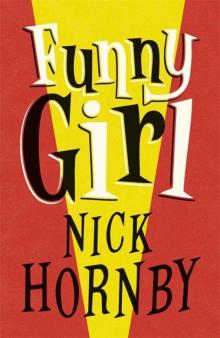 Funny Girl
Funny Girl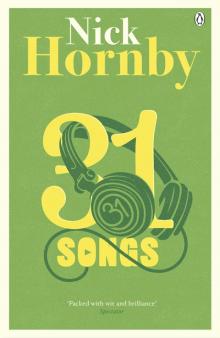 31 Songs
31 Songs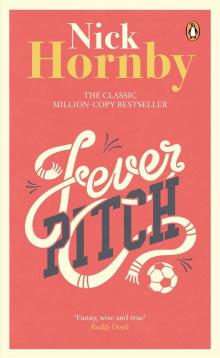 Fever Pitch
Fever Pitch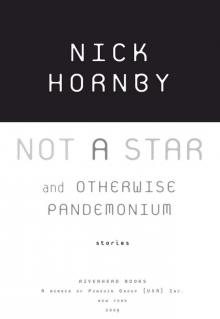 Not a Star and Otherwise Pandemonium
Not a Star and Otherwise Pandemonium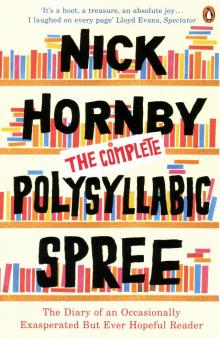 The Complete Polysyllabic Spree
The Complete Polysyllabic Spree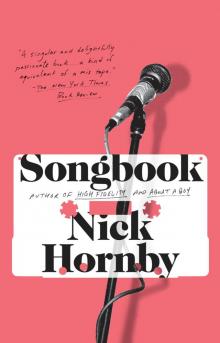 Songbook
Songbook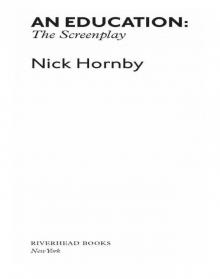 An Education
An Education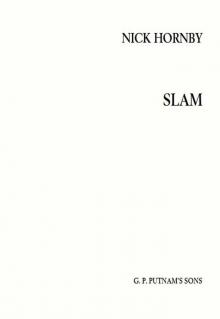 Slam
Slam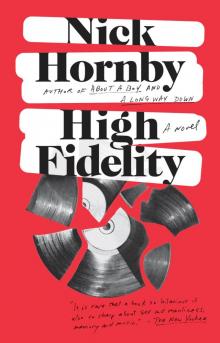 High Fidelity
High Fidelity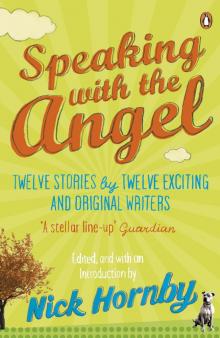 Speaking With the Angel
Speaking With the Angel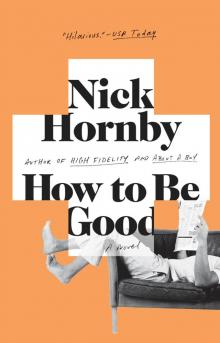 How to Be Good
How to Be Good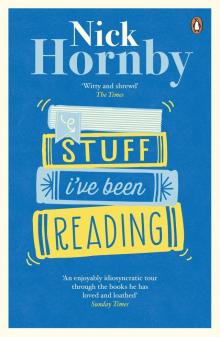 Stuff I've Been Reading
Stuff I've Been Reading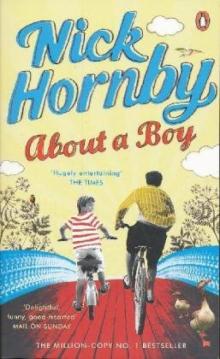 About a Boy
About a Boy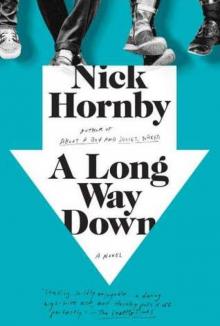 A Long Way Down
A Long Way Down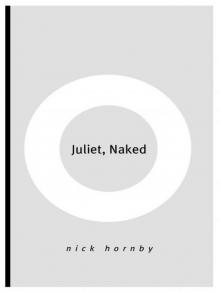 Juliet, Naked
Juliet, Naked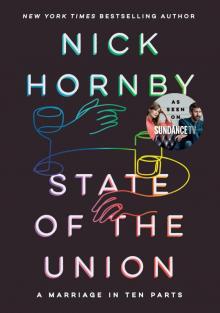 State of the Union
State of the Union Ten Years in the Tub: A Decade Soaking in Great Books
Ten Years in the Tub: A Decade Soaking in Great Books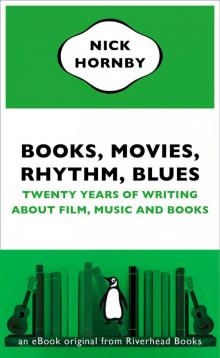 Books, Movies, Rhythm, Blues: Twenty Years of Writing About Film, Music and Books
Books, Movies, Rhythm, Blues: Twenty Years of Writing About Film, Music and Books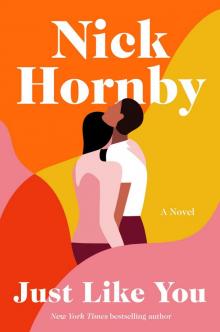 Just Like You
Just Like You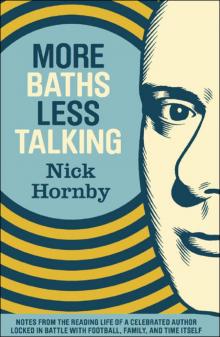 More Baths Less Talking
More Baths Less Talking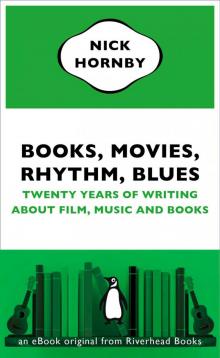 Books, Movies, Rhythm, Blues
Books, Movies, Rhythm, Blues